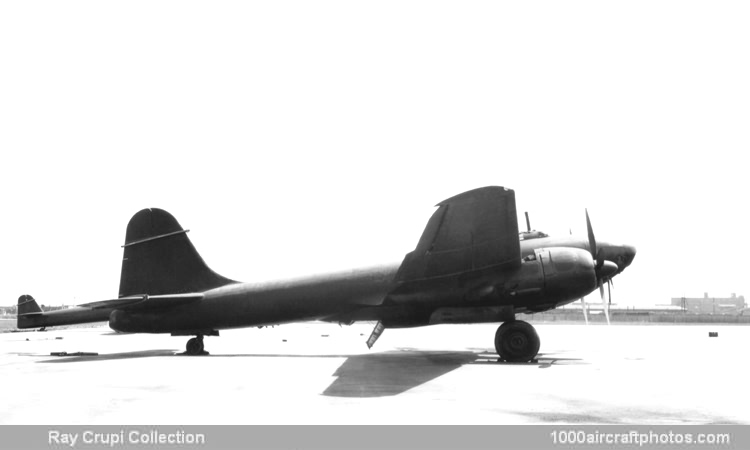10/31/2010. Remarks by Johan Visschedijk: "Tachikawa Hikoki K.K. (Tachikawa Aeroplane Co. Ltd.) was founded in 1924 and delivered its first complete aircraft but remained comparatively small until 1941 when the area of the Tachikawa plant increased almost thirteen-fold. New plants at Okayama, in southern Honshu, and Kofu were added in 1942 and 1944 respectively. Tachikawa produced approximately 9% of all Japanese aircraft during the war. Major combat types included the Ki-43 fighter and Ki-36 direct co-operation aircraft but Tachikawa was also a major producer of trainers (Ki-9, Ki-17, Ki-54 and Ki-55) and transports (Ki-34 and Lockheed-designed Type LO).
Although first conceived as early as 1939, the Tachikawa Ki-74 had not been placed in full production when the Pacific War ended. During those six years its intended role had been changed from that of long-range reconnaissance to that of long-range stratospheric bombing. Under the guidance of Dr. Kimura, the Ki-74 was originally designed in the spring of 1939 to meet the requirements of a specification issued by the Koku Hombu (Air Headquarters) and calling for a long-range reconnaissance aircraft capable of operating west of Lake Baikal from Manchurian bases.
Of all-metal construction the aircraft was to have a range of 3,107 mls (5,000 km) at a cruising speed of at least 280 mph (450 kmh). To meet these performance requirements, Dr Kimura proposed using a pair of 2,400 hp Mitsubishi Ha-214M eighteen-cylinder two-row air-cooled radial engines driving six-blade propellers and fitting a pressure cabin. However, pending development of the pressure cabin system tested on the Tachikawa SS-1 and Ki-77, the project was temporarily suspended.
Late in 1941 the project was revived as a long-range high-altitude bomber-reconnaissance aircraft capable of bombing the US mainland. To fit the aircraft for its new role, Tachikawa added bombing equipment, self-sealing fuel tanks and armor to the original design and decided to replace the Ha-214M engines with a pair of similar 2,200 hp Mitsubishi Ha-211-I radials. The design of the aircraft was approved by the Koku Hombu in September 1942 and construction of three prototypes was authorized.
The first prototype, completed in March 1944, was followed by two externally identical aircraft which were powered by 2,200 hp turbocharged Ha-211-I Ru radials. However, during the flight trial program both versions of the Mitsubishi Ha-211 suffered from teething troubles and it was decided to replace them on the pre-production aircraft with the similar but more reliable turbocharged 2,000 hp Mitsubishi Ha-104 Ru.
Thirteen Ha-104 Ru powered pre-production aircraft were built and were still undergoing tests when the war ended. All five crew members were seated in a pressure cabin in the forward fuselage, and the aircraft was armed with a single remotely-controlled 0.50 in (12.7 mm) Type 1 (Ho-103) machine gun in the tail and carried a bomb-load of 2,205 lb (1,000 kg). Plans were made to use the Ki-74s in bombing attacks against the B-29 bases on Saipan as soon as sufficient aircraft were available, but the Japanese surrender terminated the project.
Although the Ki-74 was never encountered during the war, the Allies were aware of its development, but thinking at first that it was a 'super-range, high-speed fighter' intended for long-range escort duty they accordingly assigned to it a male name: "Pat"; when the true role of the aircraft was discovered the code name was changed to "Patsy".
The fourth pre-production aircraft (Ki-74 c/n 7) was modified in 1944 to undertake non-stop flights between Japan and Germany, but the Third Reich capitulated before the first of these flights could be made. Other developments included a pure bomber version, the Ki-74-II, with a bomb-load increased to 4,410 lb (2,000 kg), and a transport version, but both these projects were abandoned before completion."
